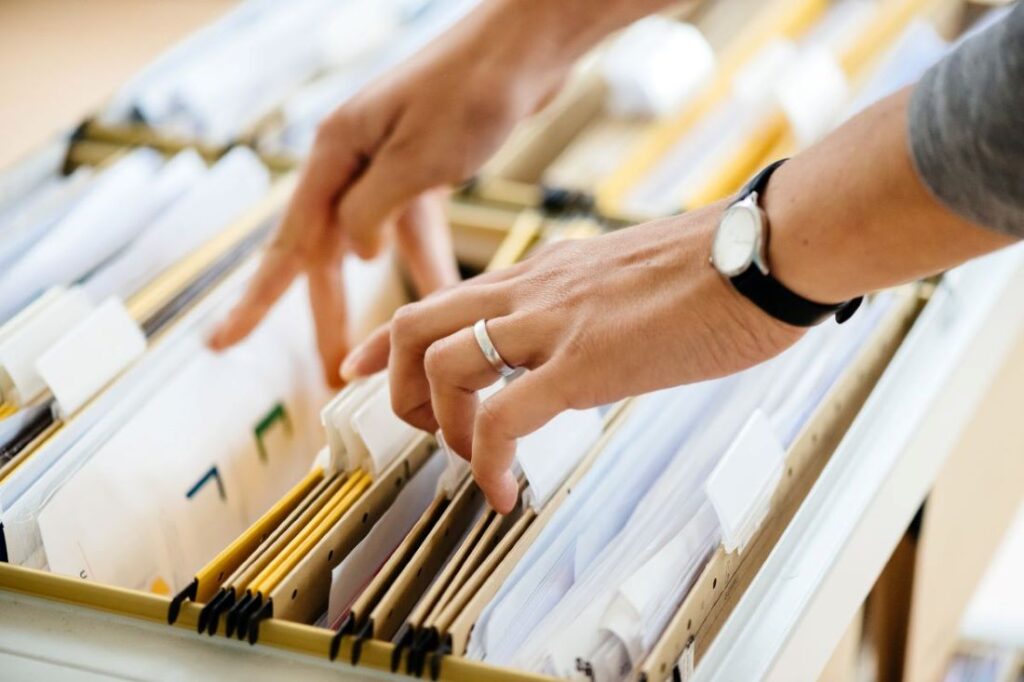More and more offices are going paperless. You can save trees and time by going paperless at home, too. Here’s how!
Disclosure: This blog may contain affiliate links, which means we may earn a commission if you click a link and make a purchase (at no additional cost). We only recommend products and services we use and trust. We aim to provide valuable, trustworthy resources that enhance and simplify your life. You can read our full privacy policy here.
Digital Document Signing
Skip the printing, signing, and scanning hassle – modern signing tools make paperwork simple and secure. Most banks, realtors, and businesses now send documents through trusted platforms that verify your identity through email or text codes.
Need a notary? Skip the hassle of in-person appointments. Services like Notarize.com offer 24/7 Remote Online Notarization (RON) for everything from mortgage papers to legal documents, all from your phone or computer. Most states now accept these digital notarizations.
Your school forms, medical consents, and bank documents likely have their own secure signing portals. They keep your signature within their system – no need to save or store signature files anywhere else.

Sign up for Paperless Banking
Switch to paperless statements to save both money and trees. While many banks charge for mailed statements, paperless delivery is free and provides access of up to 5 years of transaction history.
Banking apps now send real-time alerts and use enhanced security features like biometric login, giving you better financial oversight than paper statements ever could. Banks provide statements in both PDF and CSV formats, perfect for tracking expenses or preparing for tax season.
Set up a separate email address for your financial documents to keep banking notifications organized. Use your bank’s secure document vault for tax forms and year-end summaries – they’re stored longer than regular statements.
Link your accounts to money management tools such as Simplifi by Quicken, YNAB, or Empower for streamlined expense tracking and deeper financial insights.
Tip: On your Financial Calendar, set reminders to download your monthly statement. Store these in an encrypted folder on your computer or secure cloud storage for extra protection. Banks also have customizable alert options that notify you when large transactions occur, international charges are made, or balances fall below specific amounts.
Switch to Digital Billing and Payments
Most utilities, mortgage lenders, and service providers offer this already. In some cases, you can sign up for e-bill directly through your bank. In other cases, you’ll need to sign up through the biller. There should be instructions on your latest bill for how to do that.
Apps like Simplifi can help you manage all your online billing if your bank doesn’t have a way to do it. Plus, it helps with old subscriptions and bill negotiations to lower costs.
Once you set up online bill pay, you can pay online through the biller or your bank.

Get Rid of Junk Mail
Over 100 billion pieces of junk mail are delivered annually in the US! The EPA reports that 50% of all junk mail ends up in landfills and is not recycled.
There are several ways to unsubscribe from junk snail mail. Check out one of our most-read posts:
Purge Paper
Turn cluttered file cabinets into searchable digital archives. Sort papers into three piles: scan and shred, shred only, and temporary hold. For documents you need to keep, get a quality scanner and shred the originals to protect your identity.
Build a digital filing system that matches your current organization method. If you have folders for taxes, medical, and home repairs, mirror this structure on your computer. Name files clearly like “Insurance_Home_2024” or “Medical_LabResults_2024_0124” for easy searching.
Store these originals in a fireproof safe: birth certificates, social security cards, marriage licenses, car titles, and property deeds. The rest can be digitized.
Handle new papers right away by scanning them when they arrive. Your phone’s camera works great for quick scans, or try free apps like Adobe Scan or Genius Scan. Back up your digital files to the cloud for extra protection.
Safety Note: Double-check that your digital copy is clear and complete before shredding. Some documents, especially those with raised seals or security features, might need photos instead of scans.
What We Use: The Fujitsu ScanSnap iX100 Wireless Mobile Portable Scanner tackles large paper piles fast, while the Amazon Basics 24-Sheet Cross-Cut Shredder (#1 Best Seller) reliably destroys sensitive documents. Both tools quickly pay for themselves in time and space saved.
Save Documents as PDFs
Now that you’ve gone through this effort, you can easily maintain it. When new bank statements come in, save them as a PDF in the appropriate folder. Ditto for any other documents you may want to save.
Do you have questions about how to go paperless at home? Let us know in the comments, and we’ll try to get you an answer.




